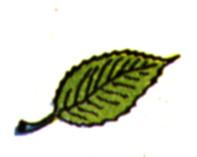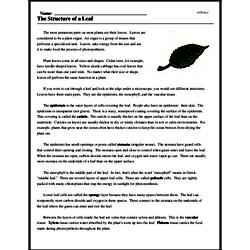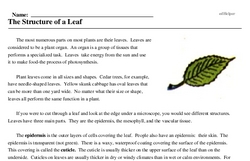The Structure of a Leaf
The most numerous parts on most plants are their leaves. Leaves are considered to be a plant organ. An organ is a group of tissues that performs a specialized task. Leaves take energy from the sun and use it to make food-the process of photosynthesis.
Plant leaves come in all sizes and shapes. Cedar trees, for example, have needle-shaped leaves. Yellow skunk cabbage has oval leaves that can be more than one yard wide. No matter what their size or shape, leaves all perform the same function in a plant.
If you were to cut through a leaf and look at the edge under a microscope, you would see different structures. Leaves have three main parts. They are the epidermis, the mesophyll, and the vascular tissue.
The epidermis is the outer layers of cells covering the leaf. People also have an epidermis: their skin. The epidermis is transparent (not green). There is a waxy, waterproof coating covering the surface of the epidermis. This covering is called the cuticle. The cuticle is usually thicker on the upper surface of the leaf than on the underside. Cuticles on leaves are usually thicker in dry or windy climates than in wet or calm environments. For example, plants that grow near the ocean often have thicker cuticles to keep the ocean breezes from drying the plant out.




